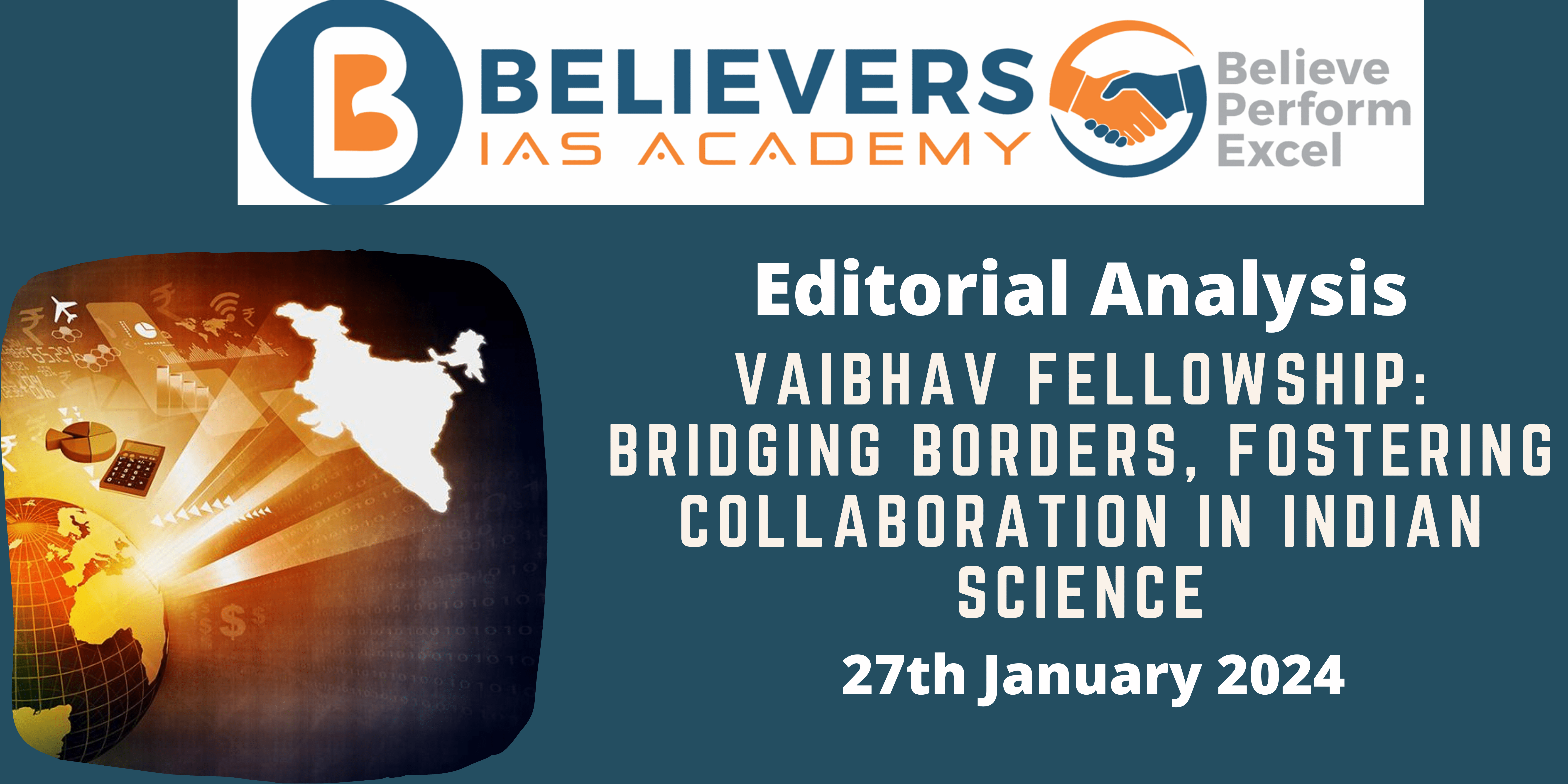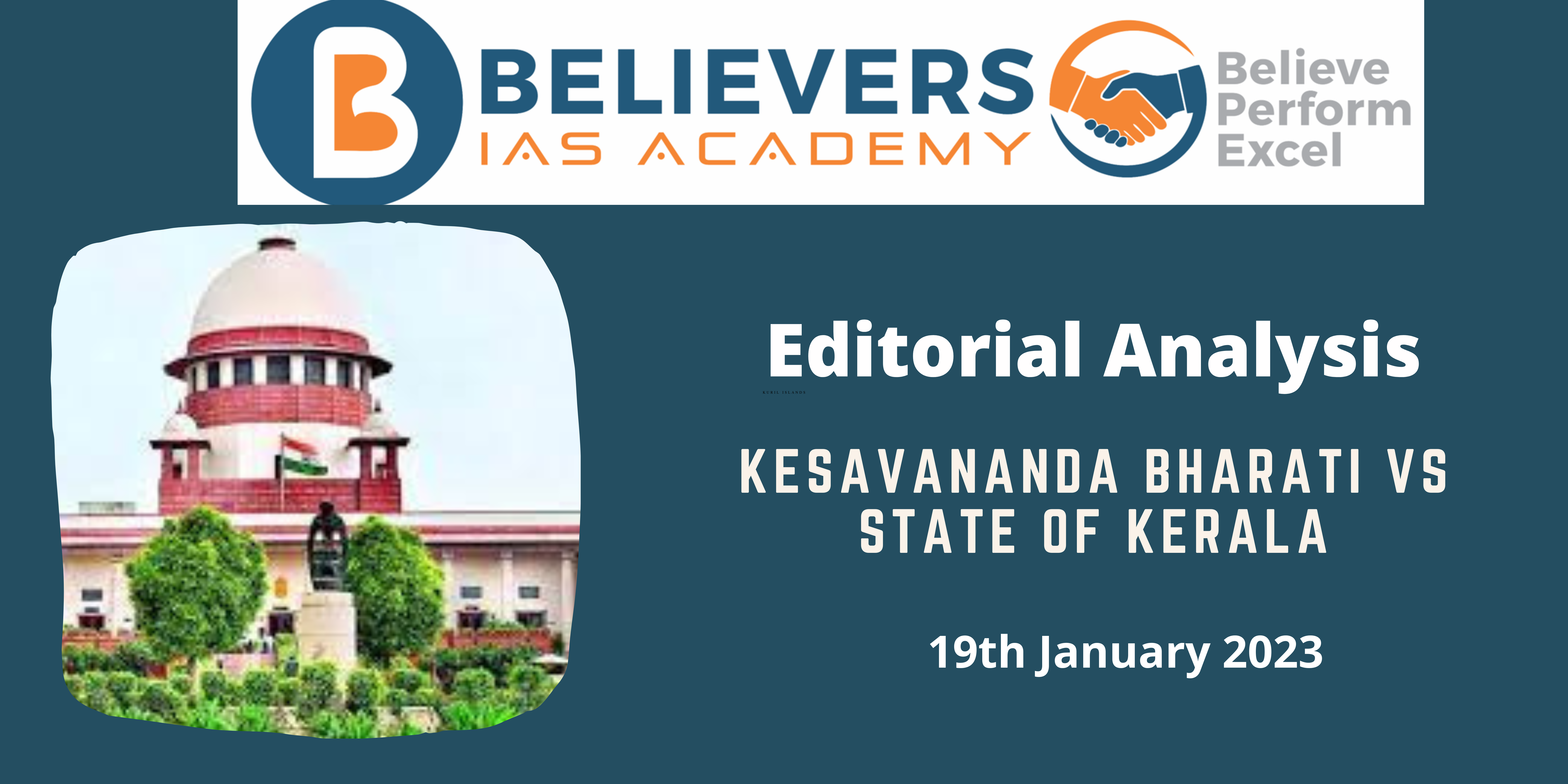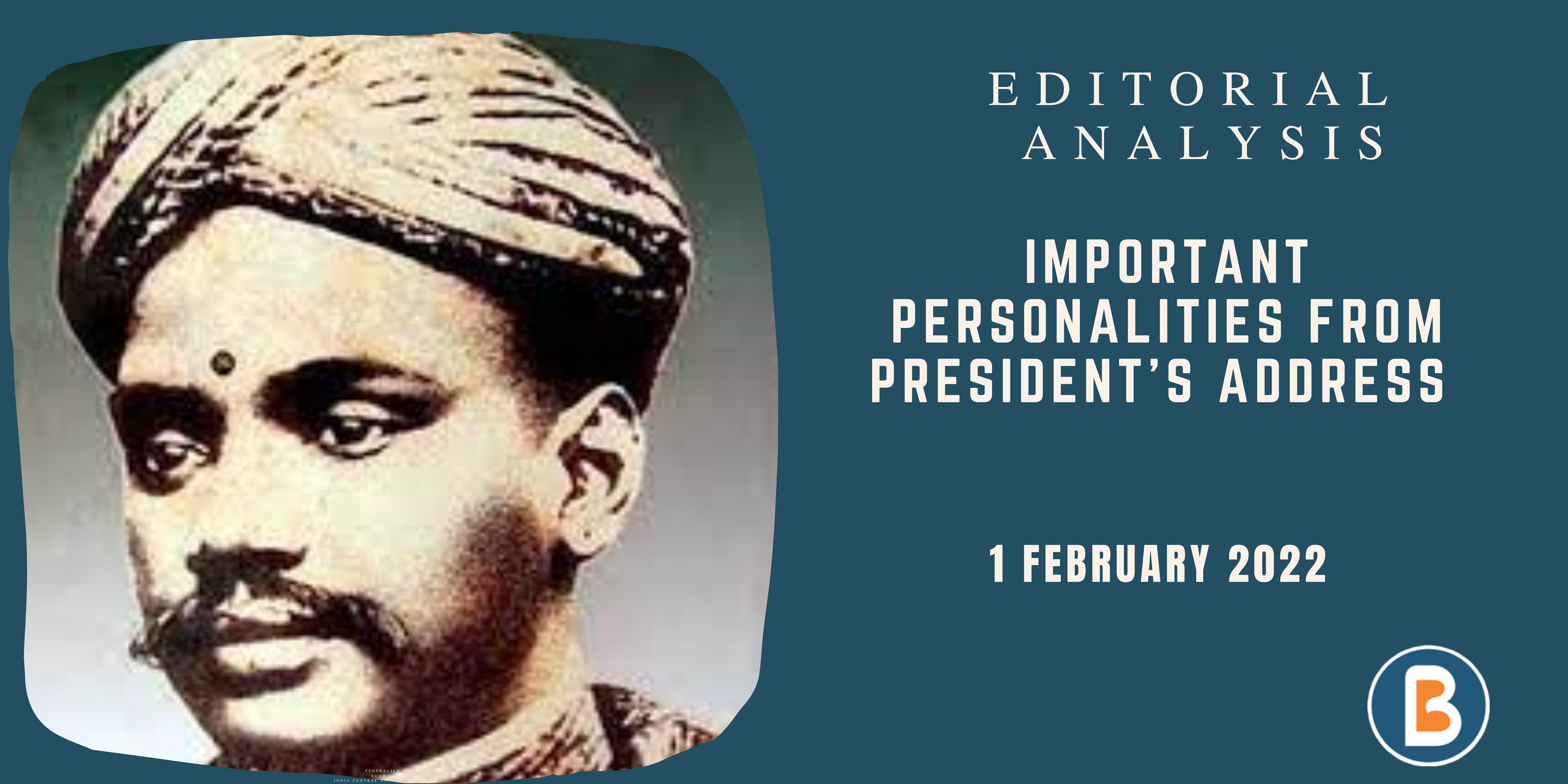Vaibhav Fellowship: Bridging Borders, Fostering Collaboration in Indian Science
Context:
This editorial delves into the recent fellowship program named Vaibhav, designed to attract scientists of Indian origin or ancestry for collaborative research in Indian institutions. The initiative aims to foster long-term connections, knowledge transfer, and potentially address the historical issue of brain drain. The analysis scrutinizes the nuances of Vaibhav, comparing it with the pre-existing VAJRA scheme, and raises questions about the specific focus on the Indian diaspora.
Relevance:
GS-02 (Indian Diaspora)
Mains Question:
Examine the objectives and potential impact of the Vaibhav fellowship program in addressing the ‘brain drain’ issue and fostering collaboration with scientists of Indian origin. (100 words)
Dimensions of the Article:
- Unraveling Vaibhav
- Delving into Diaspora Focus
- Navigating Challenges and Opportunities
- Additional Government Programs Involving Overseas Indians
Unraveling Vaibhav:
- Origins and Objectives: Vaibhav, the brainchild of the Department of Science and Technology (DST), extends an invitation to scientists of Indian origin to spend three months annually for three years in Indian research laboratories. The primary goal is to initiate projects, cultivate technology start-ups, and build enduring connections with host institutions. The initiative envisions a comprehensive exchange of ideas, innovations, and work culture in the realm of Indian academia.
- Comparing VAJRA: VAJRA, an antecedent conceived by DST, shares parallels with Vaibhav. While both programs aim to attract international faculty, Vaibhav distinguishes itself by focusing exclusively on the Indian diaspora. Unlike VAJRA’s one-year engagements, Vaibhav opts for a three-year duration. Presently, both schemes coexist, raising questions about the strategic objectives of having two similar initiatives running concurrently.
Delving into Diaspora Focus:
- The ‘Brain Drain’ Conundrum: India, for years, grappled with the challenge of ‘brain drain,’ witnessing talented researchers seeking opportunities abroad. Vaibhav’s unique emphasis on the Indian diaspora signifies a targeted effort to reverse this trend. Short-term fellowships serve as a primer, introducing foreign researchers to India’s scientific potential while shedding light on existing challenges, such as funding constraints, limited industry participation in research, and academic freedom restrictions.
- Global Talent Pool: The intense competition for tenured positions in Western universities has created a substantial pool of skilled scientific professionals. The presumption that scientists of Indian origin are more likely to stay back, as implied by the ethno-nationalist restriction, hinges on the belief that this talent pool can be enticed to contribute to Indian academia and research.
- Clarity on Objectives: While facilitating collaboration between Indian and foreign researchers is commendable, the editorial emphasizes the need for clarity regarding India’s objectives in specifically targeting the Indian diaspora. Understanding the expectations and realistic outcomes of such engagements is crucial to measure the effectiveness of initiatives like Vaibhav.
Navigating Challenges and Opportunities:
- Challenges in Indian Research Landscape: Short-term fellowships can act as catalysts, bringing attention to challenges within the Indian research landscape, including funding gaps for basic research, limited private sector involvement in core R&D, and constraints on academic freedom. These challenges, once exposed, may prompt policy changes to create a more conducive environment for scientific exploration.
- Retaining Scientific Manpower: Retaining or attracting skilled scientific manpower trained abroad requires addressing systemic issues. Vaibhav, by providing a platform for collaboration, presents an opportunity to identify and address these issues, fostering an environment that encourages scientists to contribute meaningfully to Indian research.
Additional Government Programs Involving Overseas Indians:
- Pravasi Bharatiya Divas (PBD) is observed annually on January 9th to recognize the contributions of the Overseas Indian community to India’s development.
- The Know India Program (KIP), a key initiative by the Ministry of External Affairs (MEA), focuses on engaging the diaspora, providing Indian-origin youth (18-30 years) with insights into their roots and contemporary India.
- The Department of Science and Technology’s VAJRA (Visiting Advanced Joint Research) Faculty Scheme facilitates the involvement of NRIs and overseas scientific communities in contributing to research and development activities in India.
Way Forward:
- Collaborative Synergy: The coexistence of Vaibhav and VAJRA necessitates a careful evaluation of their collective impact. A synergistic approach, leveraging the strengths of both initiatives, can enhance collaborative efforts, ensuring a more robust exchange of knowledge, expertise, and research practices.
- Strategic Alignment: Future developments in these fellowship programs should align strategically with India’s broader scientific goals. Evaluating the outcomes and making informed adjustments will be crucial in optimizing these initiatives for maximum impact.




